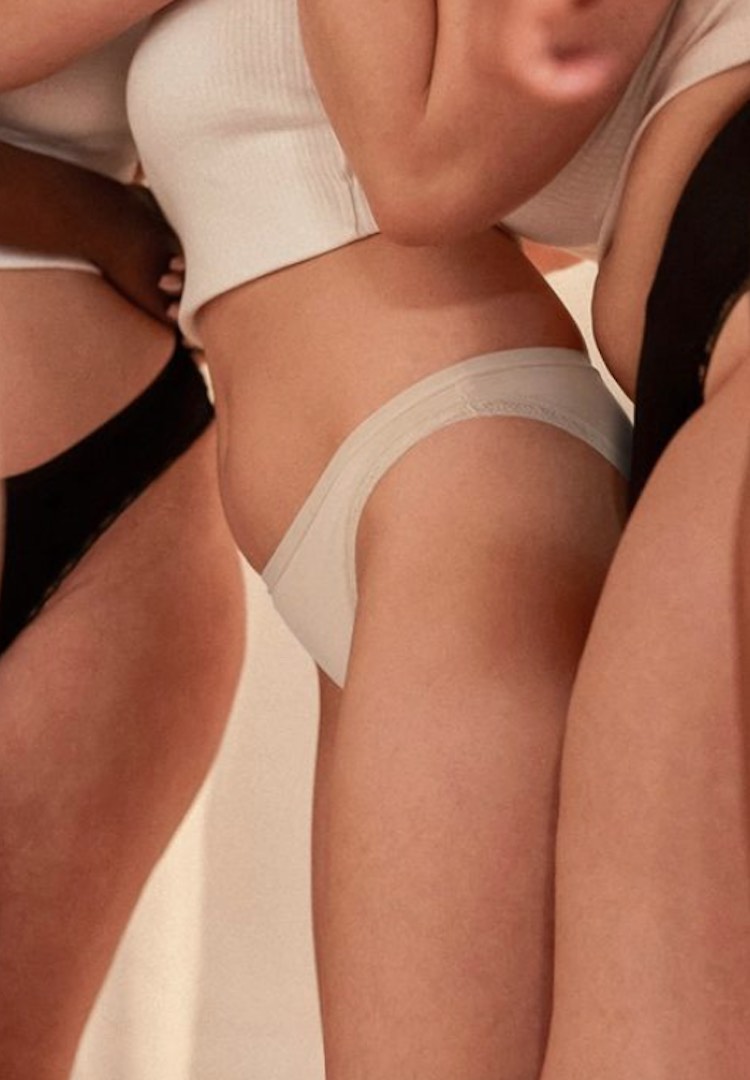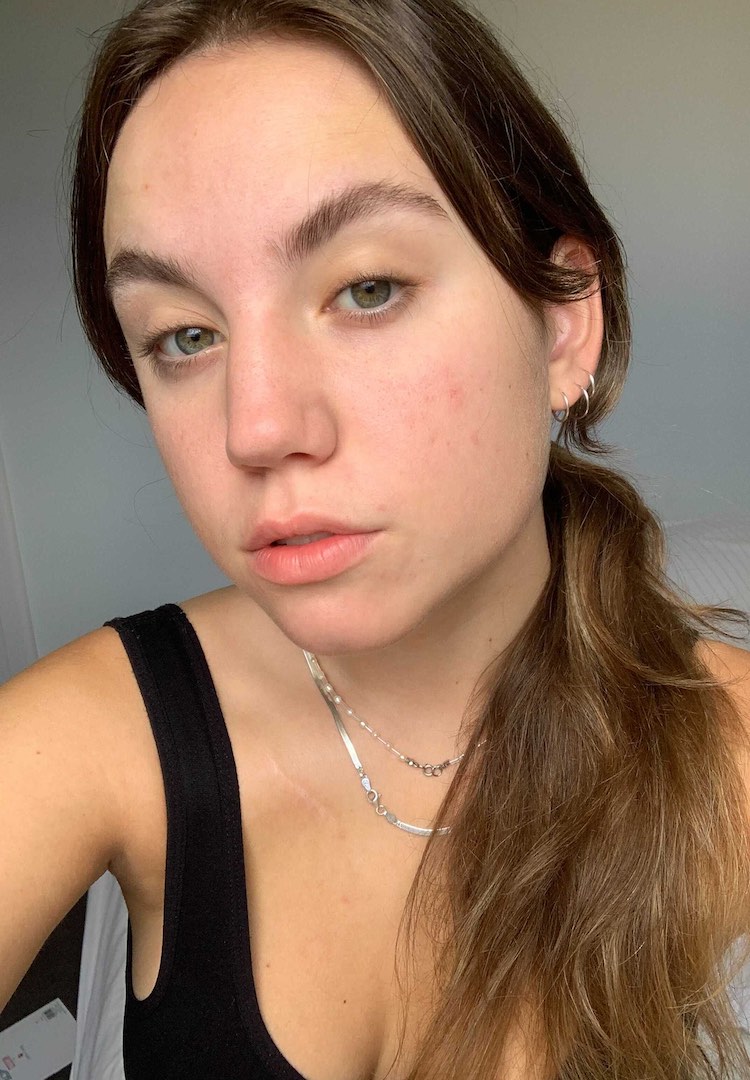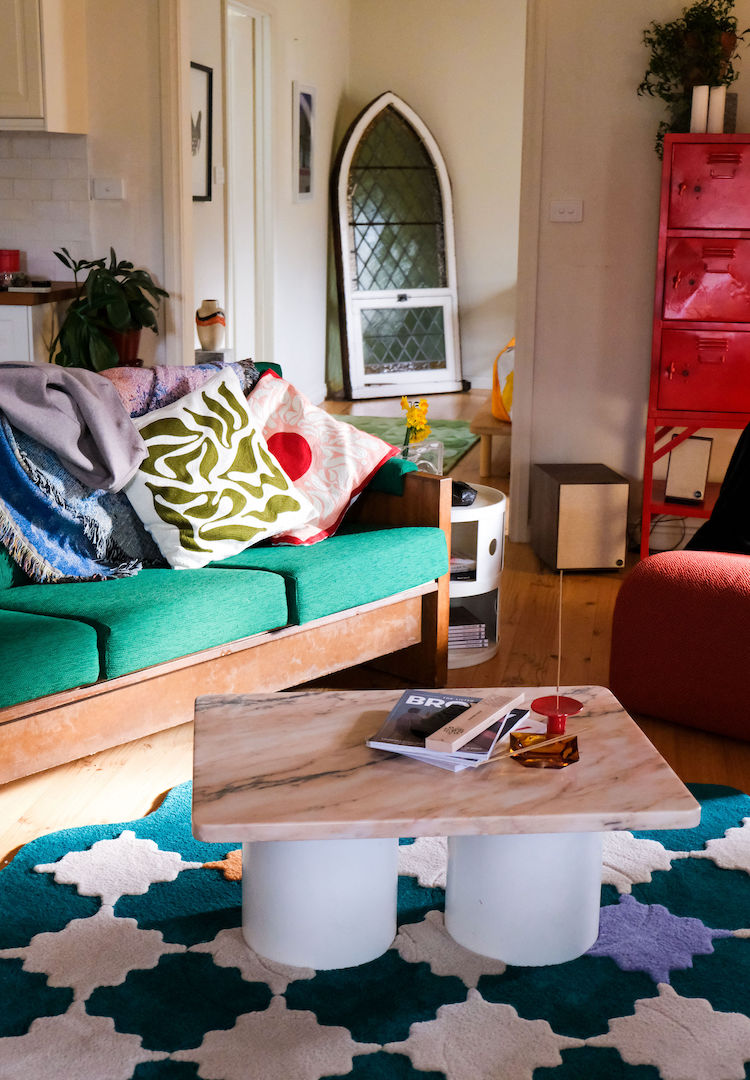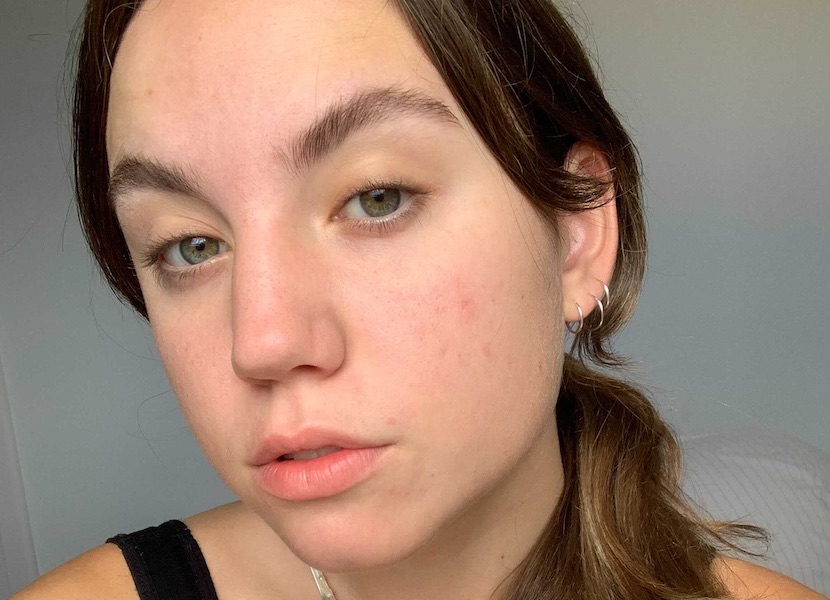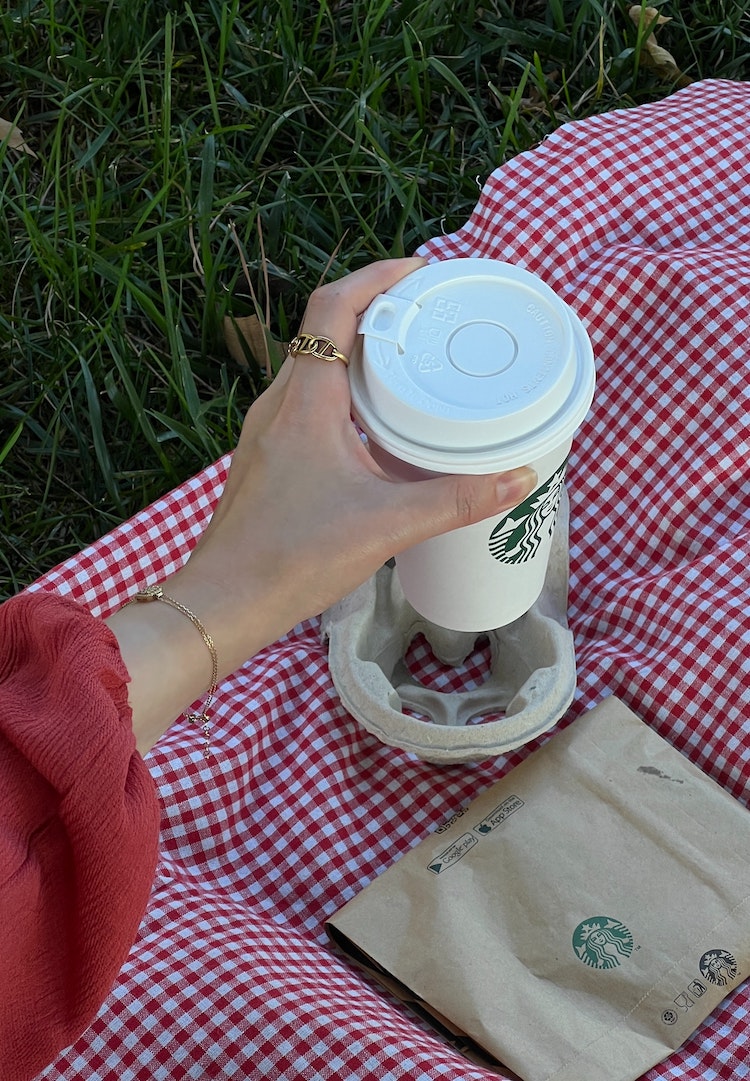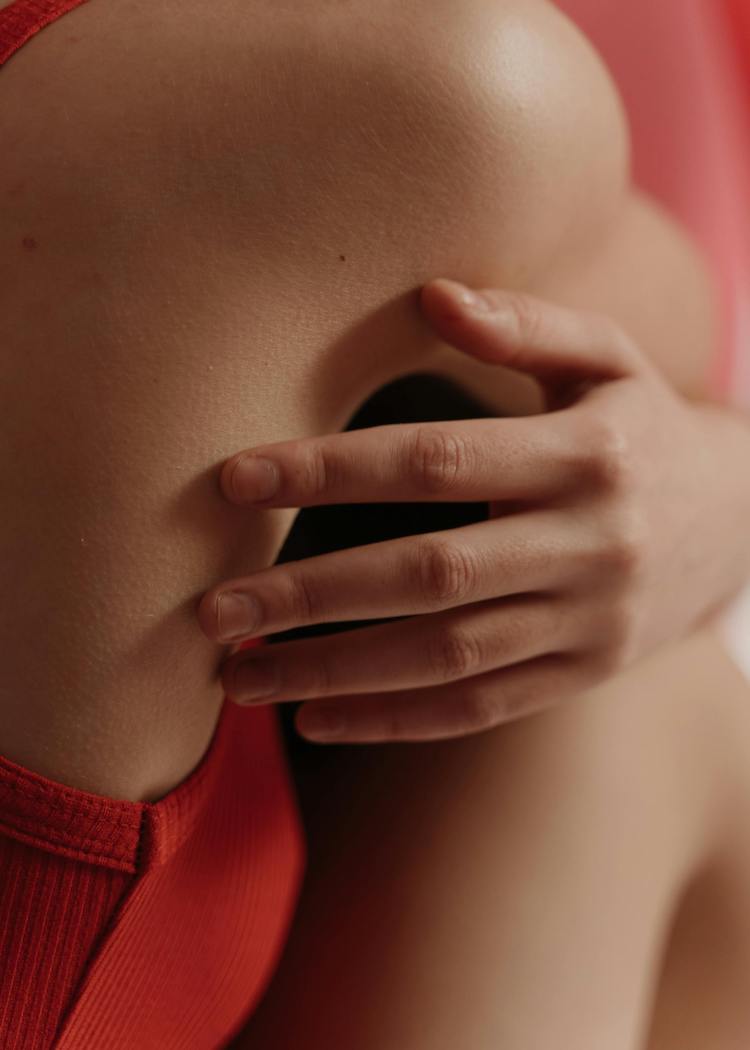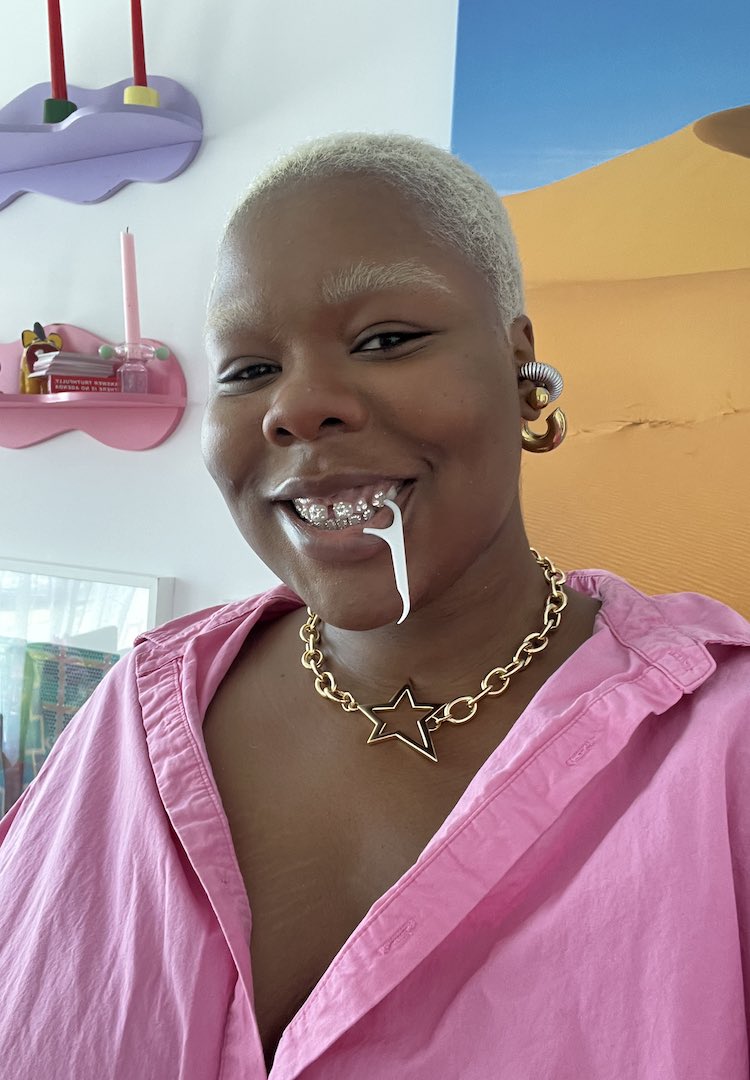How I learnt to live with my chronic skin picking disorder
IMage via Izzy Wight
Words by Izzy Wight
A decade with dermatillomania.
We all have coping mechanisms. While my tiny bubble of life experience likely pales in comparison to others, brains can be cruel. Instead of running, calling a friend or screaming into a pillow, my coping mechanism involves compulsively picking at my skin for hours on end, sometimes until I bleed.
My mum tells me I’ve been anxious from the moment I screamed my way into this world. I had normal kid problems, of course, but everything was just a little more heightened. My phobias felt life-threatening, I had chronic sleeping issues and performance expectations concerned me from the age of eight.
Looking for more thought-provoking reads? Try our Life section.
It wasn’t until reading writer Cat Marnell’s memoir, How To Murder Your Life, I realised I had a problem. Coincidentally, it was a book I’d purchased on my blowout post-uni-graduation Euro trip. I was drinking cheap beer, rationing my money and staying in overcrowded hostels. My usual sleeping arrangement was a dorm with 12 bunk beds and a singular shared bathroom. Needless to say, privacy was lacking.
In the book, Cat described herself as “a tweaky self-mutilator who sat in front of The Tonight Show with Jay Leno, digging gory abscesses into her bikini line”. Cat, a then-associate beauty editor at Condé Nast’s folded Lucky magazine, detailed the brutal realities of her drug addiction – including her experience with compulsive skin picking.
In my 21 years, that was the first time I realised other people might share in my shameful secret. I too had spent hours picking at hairs, spots and completely clear skin on my bikini line (among other places), resulting in angry, open wounds. During one particularly bad summer, I covered my crotch in Betadine and Band-Aids, hoping to ease the self-inflicted pain. I avoided swimming for almost three months.
The severe lack of privacy in these hostel rooms meant I struggled to find pockets of time in which I could find a mirror and pluck away at the spots on my face. I even lost my pair of tweezers somewhere in transit and decided not to repurchase them. My eyebrows were bushy and my skin – miraculously – was the clearest it had been in a long time. And then I started again.
Dermatillomania – also referred to as excoriation disorder or chronic skin picking – is a mental illness related to obsessive-compulsive disorder (OCD). As Dr Lisa Zakhary explained to Harvard Health, “We all pick at a scab or a bump from time to time, but for those with skin picking disorder (SPD), it can be nearly impossible to control those urges. Apart from the cosmetic impact of recurrent skin lesions and scarring, SPD can lead to serious infections, shame, depression, and anxiety.”
While it does fall under ‘obsessive-compulsive behaviour’, excoriation disorder is also a body-focused repetitive behaviour (BFRB) with no specific cause yet identified. As stated in a 2019 article in The Guardian, “the condition is considered different from obsessive-compulsive disorder, as it is neither self-harm nor necessarily driven by a deeper issue or unresolved trauma”.
It’s important to note the difference between the occasional pick at imperfections (blackheads, pimples, etc) and dermatillomania behaviour. As described in Psychology Today, “repetitive skin picking extends to pulling, squeezing, scraping, lancing, and even biting both healthy and damaged skin from various parts of the body. People with dermatillomania often target their face, hands, fingers, arms, and legs; they may use either their fingers or an instrument, like tweezers or pins.”
While I consider myself to be an extremely open person (sometimes to my detriment), dermatillomania has always remained my embarrassing secret. As a young adult, I’ve invested both money and time into my skin – and then as soon as I’d feel over or understimulated, I’d undo it all in one trancelike picking session. I’d cleanse, moisturise and put on a face mask, only to tear into my pores moments after.
Then when I’d feel really down about my face, I’d move on to a different area. I rationalised I could spend more time picking at less-noticeable targets (my cuticles, bikini line, inner thighs, etc) and wouldn’t be reminded of my ‘dirty habit’ every time I looked in the mirror. This led to my most damaging period of chronic skin picking.
In 2013, I was a year off graduating high school and my mental health was simply diabolical. To cope, I’d find my ‘zen’ sitting in front of the mirror with a pair of tweezers. My immune system was already suffering, which meant the open wounds I’d created were starting to get infected. After putting it off for as long as I possibly could, I admitted the problem to my doctor. He dismissed it, told me I “definitely needed to stop” and I went on several rounds of antibiotics.
It took years before I could tell a professional again. Through my own research, I learned cognitive behavioural therapy (CBT) had been proven effective for skin picking. I was already undertaking it for separate reasons, so I explained my dermatillomania to my therapist, telling her I’d like to work on it. She validated my emotions, made me feel comfortable and helped me work through my compulsions.
As a disclaimer, this isn’t a total success story. While my picking has subsided significantly, I’m still working on eradicating the behaviour completely. For those who also struggle with skin picking, these are the tools I’ve used to calm – not cure – my skin picking problems.
To start with, I got rid of my ‘tools’. I get my eyebrows waxed or threaded, so I have no need to keep tweezers in the house. I also threw away all magnifying mirrors, so I just use the large, communal one in my sharehouse bathroom. When I feel an urge (or I’m doing something where my hands are idle, like watching TV), I try to find something to fiddle with. A stress toy is usually the most effective for me.
I’ve also found that telling the person you spend the most time with (your partner, best friend, family member) can be really effective too. As difficult as it may be, explaining the problem can help them to support you when it happens. I – often without realising – will pick my cuticles bloody when distracted. My partner now knows to pull my hand away, with a gentle-but-firm “stop picking”. It doesn’t always stop it, but it helps.
This article was originally published on January 28, 2022.
For more advice on dealing with chronic skin picking, head here.

